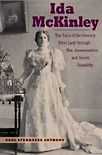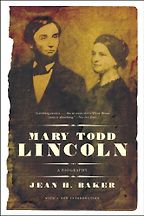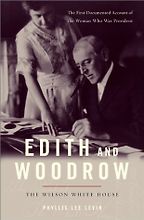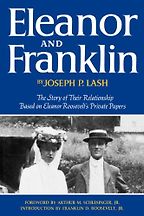Where does the title “first lady” come from?
The title of first lady probably evolved from the time of Martha Washington—she was referred to as Lady Washington by the soldiers fighting under her husband General George Washington. She took such an active interest in their well-being and was so revered for her benevolence that the revolutionaries ironically took it upon themselves to title her. That was resumed once Washington became president. Nobody knew what to call her so they called her Lady Washington.
John Adams’s wife, Abigail Adams, and James Madison’s wife, Dolly Madison, were also called Lady Adams and Lady Madison. So in some sense there was a title from the very beginning. But we know definitively that the title “first lady” was in use from 1860 on. It was first used in print on 31 March of that year to refer to Harriet Lane, the niece and hostess for the bachelor president James Buchanan.
How has the role of presidential spouse evolved over the years?
The role of first lady has evolved to reflect the changing role of women in America, the growing trend toward gender equality in American society. And it has also evolved as a result of women in the role responding to crises during their tenure.
The role of women up until the 1840s was largely confined to the home. Women were seen as having great influence and power in society, but through their roles as wives, mothers and homemakers. First ladies from Washington through the time of President Polk were seen as the symbolic homemakers of the nation.
That became more complicated in the run-up to the Civil War, when first ladies began being targeted and emerging as people with opinions of their own. The Civil War had a wrenching effect on society. Many women were active in supporting the war effort. It suddenly was accepted that women had a civic duty outside the home. Some women became active in the abolition movement. In the post-Civil War era you began to see first ladies involved in charities and other compassionate causes.
“All these books, even if you are not interested in first ladies or American politics, are great studies of human interaction and the balance of power in marriage”
By the turn of the 20th century, all women were expected to have opinions on suffrage and prohibition. Those movements really drew women across the country, including women in the White House, into politics. Those issues dominated the first two decades. By the mid-20th century you saw Eleanor Roosevelt active during the Great Depression. You saw Jacqueline Kennedy interested in historic preservation. You saw Lady Bird Johnson advocating for environmental preservation. You saw Rosalynn Carter working on mental health reform legislation.
So really it’s a two-part thing—the evolving role of women in society and how the women in the White House grew the role of first lady by responding to the issues of their times.
How did you become interested in the lives of first ladies?
I had been interested, as a kid, in presidents. What attracted me to studying first ladies was that, until I did my work, few historians had subjected the activities of first ladies to serious analytical study. Long before Eleanor Roosevelt, first ladies had a real impact on national and even world affairs. Yet nobody had done a real chronicling of that. Most of the women who have been called first lady were far more educated, opinionated and involved than they were given credit or blame for being.
Your first choice—And Tyler Too by Robert Seager—is a tandem biography of one of America’s most obscure presidents and his sensational second wife. John Tyler, the 10th president of the United States, was the first to succeed to that office from the vice-presidency, upon the death of William Henry Harrison in 1841. What should we know about Julia Tyler and why is Seager’s work the right place to turn?
She really doesn’t fit the Martha Washington model of first lady. She had scandalised her high society family by posing for a lithograph advertisement as a young debutante. Then she scandalised the nation by suddenly marrying the recently widowed President Tyler, who was 30 years her senior. He had kids from his first marriage who were older than she was at the time. His first wife had died in the White House just 16 months before they married. She was 24 when she became first lady. She was witty, well travelled, well educated and an accomplished, international flirt.
She put her formidable abilities to work during her short time in the White House—she was only first lady for eight months. And she had tremendous influence in helping Tyler initiate the annexation of Texas, which was his signature achievement. She personally went to the Capitol Galleries to watch the debate. She applied her charm to curry favour with members of the House and Senate.
She exulted in her public role?
As Seager’s book uncovers in great detail, she worked very closely with a reporter from the New York Herald who gave her endless glowing press and turned her into an American celebrity. She threw fantastic parties and became so associated with dancing that the “Julia Waltzes” were written in her honour. They sold out so rapidly that she couldn’t get a hold of the sheet music herself. After he left office, her husband sided with the Confederacy during the Civil War, so she was viewed as a turncoat by most of the Northern part of the country. But she methodically worked her way back into favour. She remained widely written about and fixed in the public imagination throughout the 19th century.
Her life was a saga worthy of William Makepeace Thackeray. Seager’s book is written well, with humour and with a wise eye for human nature. It’s a forgotten book about now forgotten figures.
Your next choice is a biography of the wife of one of America’s most beloved presidents—a woman who is remembered but usually portrayed in a negative light. Please tell us about Mary Todd Lincoln and why Jean Baker’s biography of her is worth reading.
Jean Baker sets a great example for biographers. It’s not that she used a lot of new sources; there was just abundant new insight. Baker makes you recognise how Mary Lincoln was demonised in her own day and how that served the purposes of her husband’s opponents. They knew how popular Abraham Lincoln was and that his wife was the only way to attack him. In Jean Baker’s book we are able to see Mary Todd Lincoln as a woman, not a liability. She was well read, she was passionate, she was polemical, and yes she struggled with depression and perhaps paranoia. It’s fair and it’s accurate. It’s the most analytic biography ever written of Mary Lincoln.
Mrs Lincoln became a target—for her extravagant spending and intense bouts with grief—during the most divisive time in United States’ history. Revisionists claim that she had a rougher ride in the press and was portrayed in a harsher light by historians than any other first lady. Do you agree?
In a word, yes. Perhaps the treatment of Hillary Clinton was almost as harsh—she was baselessly accused of murder, being a secret socialist and lying to the American public about her husband’s White House liaison. But unlike Mrs Lincoln, Hillary Clinton had the personal wherewithal to endure it.
Mrs Lincoln didn’t get much sympathy, despite the tragic losses she suffered, because those losses came in the midst of the Civil War—when so many in the United States had lost sons, fathers, husbands and fiancés. There was this attitude that at least you got to see your son die.
So it was a time of emotional austerity?
Correct.
But from today’s perspective, what she suffered seems so severe. Mrs Lincoln survived the death of three sons at ages four, 11 and 18, lost several siblings during the Civil War and she was famously holding her husband’s hand when he was assassinated. In her later years, her only surviving son committed her to an asylum. Has any first lady lived as tragic a life as Mrs Lincoln?
Well, Ida McKinley, the wife of our 25th president William McKinley, survived the tragic deaths of her only two children, little girls who both died before reaching age five. She suffered from a chronic seizure disorder. And she lived to see her husband assassinated.
Then there is Jane Pierce, wife of our 14th president Franklin Pierce. She had two children die before age four. Then, during a train trip just before her husband’s inauguration, their car derailed and she saw her only surviving son’s skull crushed right in front of her. She never recovered from what she witnessed.
Sounds like a three-way tie. So let’s move on to another reviled wartime first lady: Edith Wilson.
Rightly so.
She has been called “the secret president” for the covert role she played in running the government after her husband was incapacitated by a stroke in 1919. Phyllis Lee Levin’s Edith and Woodrow indicts the second Mrs Wilson for perpetrating a devious deception on the American people. Please tell us about the second Mrs Wilson and encapsulate Levin’s evidence.
All these books, even if you are not interested in first ladies or American politics, are great studies of human interaction and the balance of power in marriage.
Levin’s book is very fascinating because she used a lot of new documentation. It really gives us a glimpse into the life of the Wilsons in the White House that we had never had before. It brings a depth of detail that had always been missing from these stories. It used formerly unavailable White House memos, and reports by the president’s personal physician.
The role of first lady, certainly by the mid-19th century, exposed these women to the great writers, the great thinkers and the great heroes of this country and the world. The Wilsons were the first presidential couple to go overseas while they were in office. Europeans had never seen a US president’s wife and Wilson was seen as a hero in France and Belgium and England. Flowers were thrown at their feet. What resulted was a global shift in the perception regarding the role of a president’s wife.
Get the weekly Five Books newsletter
Edith was everywhere with him. They were at Buckingham Palace in 1918, just after World War I ended, with Queen Mary and King George V. Clemenceau even arranged for her to slip into the Hall of Mirrors when the Treaty of Versailles was signed. She was the only woman there. The trip to Europe was for her a procession of personal adulation. It all went to her head.
She was a first lady whose love of her husband grew possessive to the point where she began to bash people who were less than slavishly adoring. She convinced Wilson to get rid of his secretary of state. There is nothing in anything she wrote to indicate that she felt any responsibility to any constituency other than her husband and herself.
That selfishness led her to perceive her husband’s stroke as something that needed to be covered up. She insisted that under no circumstances would he resign and under no circumstances would he relinquish the reins of power, even temporarily. She arranged an ad hoc way to get around his incapacity and shield others from learning about his true condition by making decisions for him. She would go into his bedroom, claim to ask him questions and come out with what she said was a transcription of his wishes.
So she covered up the president’s condition and made policy while posing as merely a spokesperson?
Yes. Nobody was ever allowed to see him without seeing her first and she insisted on always being present. She cut him off from his cabinet and from any intelligent advice. She also cut him off from his three beloved daughters from his prior marriage. His first wife had died, in the White House, only a year prior to his marriage to Edith, and unlike Edith she had been a very intelligent woman who helped him write his speeches. Edith Wilson was the opposite—a narrow-minded bigot and an example of the worst kind of influence a first lady can have.
Levin seems to argue that Edith Wilson’s strategic errors are to blame for the Senate’s failure to ratify the League of Nations Treaty.
That is correct. She insisted that the administration not compromise on a single article of the treaty. She insisted on an all-or-nothing vote.
Your next choice is a portrait of the complicated partnership between America’s 29th president, Warren Harding, and his wife Florence. Please tell us how we should remember the Hardings and why we should read The Shadow of Blooming Grove by Francis Russell?
The Shadow of Blooming Grove inspired me to write my biography of Mrs Harding. The book was well written, it captured the 1920s very well, it depicted the mid-western milieu that Harding came from. But Florence Harding was no more than a caricature. At one point, Russell describes her as like a dried autumn leaf, brittle and devoid of chlorophyll. It’s a great read but really sexist.
Florence Harding is a woman whose influence was acknowledged but who had always been derided. There was even a rumour that she poisoned the president in retribution for his chronic adultery. All of that ugliness was in The Shadow of Blooming Grove. I found it unfair, so I thought Florence Harding was a person whose story I really wanted to tell.
I was fascinated to learn that this first lady had had a baby as a teen, lived in a common-law marriage, left her alcoholic partner and resumed the use of her maiden name until she married Harding, who was five years her junior. How did having such a stunningly modern first lady affect the mores of Jazz Age America?
She was an exemplar of that time, despite the fact that she was 60 when she came to the White House. She had pince-nez glasses, tightly marcel-waved grey hair, and wore drop-waisted dresses. Her spirit and even her clothing was something new in America. She had worked tirelessly to make Warren the political success he improbably became. She was a tactician and speechwriter. She knew the art of politics, even the backroom negotiating.
Florence had been the business manager of her husband’s newspaper. She knew the press and how it worked. She was expert at manipulating her own image and as a consequence she was very popular in her time. She created her own persona—she invited along news cameras to capture her flying in an airplane, entertaining Hollywood stars and hosting jazz bands at the White House. She was also the first first lady who saw herself, despite being unelected and unsalaried, as responsible to the American people. She was a full partner with Warren in all that he did.
How does your biography of Florence Harding build on the work done by Francis Russell?
It builds on the lack of work done by Francis Russell. Florence Harding is a caricature, at best, in Russell’s book. I endeavoured to show her true, full story.
Finally, Eleanor and Franklin by Joseph Lash. This tandem treatment of the Roosevelts won a Pulitzer Prize in 1972. Please tell us about Eleanor Roosevelt, her marriage, and what we can learn about her impact on history from this book.
So many books were written about Eleanor Roosevelt—for instance, Doris Goodwin’s wonderful No Ordinary Time and Blanche Wiesen Cook’s two volumes, which took us until the cusp of World War II. But no book surveyed all 12 of her White House years, until Joseph Lash wrote Eleanor and Franklin.
Lash covers her life up to the death of Franklin. He also wrote a second volume, Eleanor: the Years Alone, about her global role and her role in Democratic politics during the post-World War II era. When Lash wrote, he was limited by the public records then available. And he was a part of the story. As a representative of the American Students Union he was accused of being a communist; Mrs Roosevelt rose to his defence.
This is a highly readable and engaging story. It really shows that this was a complicated union between two people who loved each other, shared each other’s values, and made a lifelong commitment to each other—even though they were no longer physically intimate or sexually compatible.
Was Eleanor the first first lady to forge her own public role after her White House years?
Dolly Madison, the spouse of the fourth president, didn’t get paid and didn’t have an official title, but she became a very important symbol of the early days of the Republic. After her husband died, she always appeared at public events, which was very unusual, given the role of women in the 19th century. And then there was Frances Cleveland, the Princess Diana of her age. She was 21 when she got married at the White House in 1886. During World War I she gave speeches and helped rally the public.
But Eleanor was the first first lady to have a prominent public policy role—that role was thrust upon her by President Truman. He recognised her analytical capacity and her passion for humanitarian causes. In 1945 he appointed her to be a delegate to the nascent United Nations, where she became the first chair of the Commission on Human Rights.
Five Books aims to keep its book recommendations and interviews up to date. If you are the interviewee and would like to update your choice of books (or even just what you say about them) please email us at [email protected]
Five Books interviews are expensive to produce. If you've enjoyed this interview, please support us by donating a small amount.












